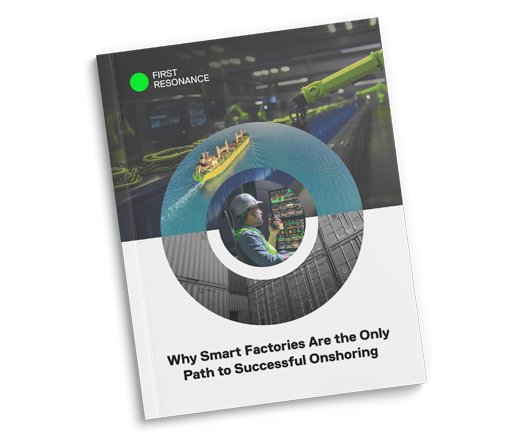👋 Happy Saturday! This week’s highlights include a look inside Meta’s new tent-like GPU clusters (a tactic borrowed from Tesla’s Model 3 production line), a working map of next-gen software tools for hardware teams, and a factory walkthrough at Redwood Materials showing how EV batteries get recycled at scale.
P.S. Almost a hundred people have already registered for our next SF event on 8/28—we’ve rented out the entire beer garden and there’s still room to join! Details here - feel free to bring a friend or two.
Interesting Photo: GPU Clusters Meet ‘Sprung’ Structures
When urgency outweighs elegance, tents go up. Tesla famously took this approach with GA4, its fourth vehicle assembly line built under a sprung structure to bypass Model 3 production bottlenecks at their Fremont facility. Meta is now applying the same strategy to compute, using tensioned fabric structures to rapidly stand up GPU clusters for AI deployments.
Training modern AI models means coordinating tens of thousands of GPUs across tightly managed clusters. At this scale, the bottleneck isn’t model architecture or data, but the speed at which compute infrastructure comes online. The faster a company brings that hardware online, the faster it can train, tune, and iterate - especially as Meta races to scale larger, more aligned models ahead of its competitors.
Structures like these are built by companies like Sprung that use architectural membranes made from DuPont Tedlar or Kynar film (UV-resistant, fire-retardant coatings laminated over polyester fabric). You’d typically see these structures used for athletic training centers, pool enclosures, or church auditoriums.
Interesting Chart: The Software for Hardware Landscape
A working map of next-gen. software tools for hardware and manufacturing teams, spanning from early design through production ops. The development cycle is broadly consistent across industries, whether the application is robotics, consumer hardware, or in aerospace/defense. Start with design and simulation, move into prototyping and test, then scale to production (with validation continuing at volume). The volumes vary, but the underlying loop is the same: design, build, test, repeat.
A few patterns and early thoughts:
The design & simulation phase is where most of the AI-native tools are showing up first (copilots for board design, simulation agents, automated 2-D drawings).
There’s more funding and interest in the space than we’ve seen in years, but adoption still depends on whether these tools actually reduce friction for engineers doing real work.
One open question: are we actually building faster? Too early to tell if new tools have translated to shorter development cycles, or if the complexity lives somewhere else now.

Factory Tour: Redwood Material’s Battery Recycling Stack
A factory tour at Redwood Materials - founded by Tesla cofounder and longtime CTO JB Straubel, who saw battery recycling as the missing link in a vertically integrated EV supply chain.
“We’ve taken a lot of learnings from the production process because basically, what we’re doing is un-manufacturing at scale.”
The company processes ~25 GWh/year of feedstock (mostly EV packs and production scrap) across dozens of truckloads daily. That material ends up in three primary streams:
Second-life storage: Packs with 50–80% capacity are reused in stationary systems (e.g. a 60 MWh microgrid using ~800 EV packs to run an off-grid AI data center). Slower charge/discharge needs make them ideal for extending usable life before recycling.
Materials sales: Shredded steel, aluminum, copper, and black mass (Li, Ni, Co) sold into industrial markets.
CAM manufacturing: Recycled lithium and nickel are refined into cathode powders used to make new lithium-ion battery cathodes.
Presented by First Resonance: Rethinking Factory Intelligence
Traditional automation struggles to keep pace with modern production demands. This new eBook, The Agentic Shift: Building Intelligence Into the Fabric of Industry, explores how forward-thinking manufacturers are moving beyond dashboards and static scripts to agentic systems that sense, decide, and adapt in real time. The free guide offers a practical framework for building smarter, more resilient operations powered by AI agents.
Download your copy and start shaping the future of manufacturing.
Manufacturing & Startup News
More leftovers from our weekly research:
Bedrock Robotics raised $80M in Series A funding to retrofit heavy construction equipment with autonomous kits, using sensor fusion (akin to AV stacks) to enable 24/7 operation and job site automation.
GeologicAI raised $44M in Series B funding to power robotic core scanners with AI for orebody modeling, streamlining mineral exploration with automated precision, much like inline QC in advanced manufacturing.
Estes Energy raised $11M in seed funding to develop a multi-chemistry battery platform (NMC + LFP) that optimizes energy density and system flexibility for defense and robotics applications.
Auriga Space raised $6M in seed funding to develop electromagnetic launch tracks using maglev-like propulsion.
Bench raised $1.4M in pre-seed funding to develop an AI-driven platform that streamlines product development with integrations to CAD, CAE, and PLM tools.
Access Every Link We’ve Ever Shared 🎞️
Refer three friends to Hardware FYI and unlock our full archive.
Missed an issue? Hunting for that one link? Every tool, guide, and article we’ve ever shared is in here.
Thanks for reading to the end - if you’ve enjoyed the mechanics of these insights, consider sharing this issue with a fellow enthusiast!








I wonder what Meta is doing about physical security